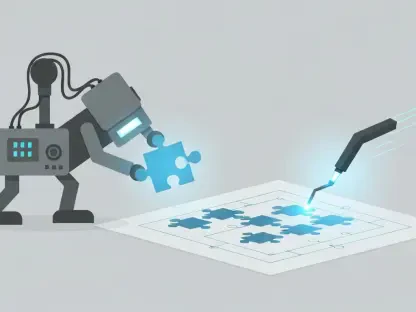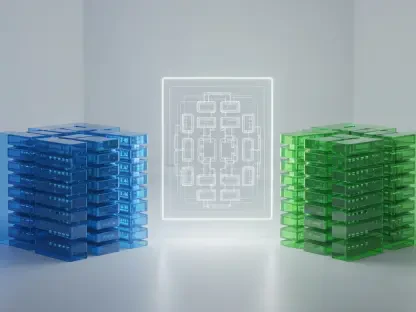The software testing industry has experienced a significant transformation with the transition from Continuous Automation Testing platforms to Autonomous Testing Platforms. This shift is driven by advancements in generative artificial intelligence and large language models, necessitating smarter and more adaptive testing solutions to address the complexities of contemporary software development. Continuous Automation Testing platforms have previously reduced manual testing efforts by integrating scalable automation tools into DevOps pipelines, providing essential services in enterprise environments that require comprehensive test coverage across diverse technologies and conditions. However, these platforms have encountered a ceiling in automation potential—often stalled between 23-25%—due to difficulties managing the intricacies introduced by artificial intelligence-driven development.
Continuous Automation Testing Platforms
Struggles and Limitations
Continuous Automation Testing platforms have played a pivotal role in the software testing ecosystem by minimizing manual testing efforts and streamlining deployment processes. Within enterprise environments, the integration of scalable automation tools into DevOps pipelines is indispensable, particularly when it involves comprehensive test coverage across a wide array of technologies and environments. Yet, despite their critical functions, these platforms have traditionally been constrained in their ability to fully automate. Their efficacy often hits a ceiling, automating only up to 25% due to challenges in tackling the complex dynamics introduced by AI-driven software development. The emergence of more sophisticated AI applications further complicates testing processes, revealing vulnerabilities and limitations in traditional automation approaches.
Integration into Enterprise Environments
In enterprise contexts, Continuous Automation Testing platforms shine by offering scalable solutions that address diverse testing needs across vast technological landscapes. Enterprises have increasingly relied on these platforms to expedite testing cycles, enhance the precision of test coverage, and reduce the burden of manual testing tasks. Despite their utility, a critical examination reveals their limitations in achieving higher automation levels. Factors such as increasing complexity in application behavior, compounded by AI’s unpredictable characteristics, challenge these platforms. Continuous Automation Testing approaches often struggle to adapt to generative AI’s rapid pace of code generation and the unique intricacies of AI-driven developments. Such challenges underscore the necessity for a paradigm shift towards more adaptive testing solutions.
Transition to Autonomous Testing Platforms
Addressing AI-Induced Complexities
Autonomous Testing Platforms are emerging as a transformative force in the field, designed to address the complexities spawned by generative AI and large language models. These platforms integrate AI and GenAI capabilities to enhance testing processes, making them more intelligent and adaptive. Tester TuringBots—advanced AI agents—are central to this evolution, greatly enhancing tester productivity. These agents empower testers to conduct faster testing, manage larger code volumes, and address unique issues posed by AI-generated behaviors. As AI applications become more prevalent, the capacity to address AI-generated hallucinations and unpredictable behaviors becomes increasingly essential. Autonomous Testing Platforms respond to these challenges with solutions that enhance both the efficiency and accuracy of the testing lifecycle.
The Next Evolutionary Step
As generative AI continues to accelerate code production, Autonomous Testing Platforms are well-positioned to meet the demands of future software development methodologies. Their timely emergence is driven by converging factors, including GenAI’s widespread adoption in development processes, the proliferation of new AI applications, and the need for agile delivery cycles in continuous deployment environments. These platforms represent a marked evolution, offering scalable testing solutions that achieve higher accuracy without compromising speed and efficiency. By facilitating intelligent automation, Autonomous Testing Platforms set the stage for more sophisticated, AI-driven testing landscapes, where traditional automation solutions fall short in accommodating the complexities and fast-paced changes of modern software development.
Strategic Imperatives and Future Directions
Adopting Intelligent Testing Solutions
The evolution towards Autonomous Testing Platforms highlights a pivotal strategic necessity for companies aiming to keep pace with swiftly evolving software technologies. This progression is more than just a technological upgrade; it is a strategic move to harmonize speed with accuracy in software testing processes. Autonomous Testing Platforms integrate several key features that address the dynamic and complex nature of contemporary application development. Core components such as UI test automation, model-based testing, and natural language processing for test creation and management are paramount. With these features, they blend seamlessly into agile and DevOps methodologies, underscoring the transition toward sophisticated, AI-powered testing solutions capable of responding to the demands of today’s development landscapes.
Future Prospects and Evolutions
Autonomous Testing Platforms are poised to transform the software testing industry, ushering in a new era of testing methodologies. As artificial intelligence gains prominence in both software development and business operations, these platforms signify a strategic shift towards adaptive testing solutions essential for navigating the fast-paced evolution of technology. Far from merely enhancing traditional methods, autonomous platforms offer groundbreaking possibilities in terms of testing precision and efficiency, overcoming the intricate challenges posed by contemporary software demands. By incorporating these platforms, businesses can revolutionize their testing approaches, achieving competitiveness through nimble and intelligent solutions.
The evolution from Continuous Automation Testing to Autonomous Testing Platforms marks a pivotal shift in software testing. Driven by innovations in generative AI and large language models, companies must embrace this change as both a technological and strategic necessity. As these platforms advance, they promise to reshape testing for the foreseeable future, becoming key components of enterprise-level software testing strategies.









